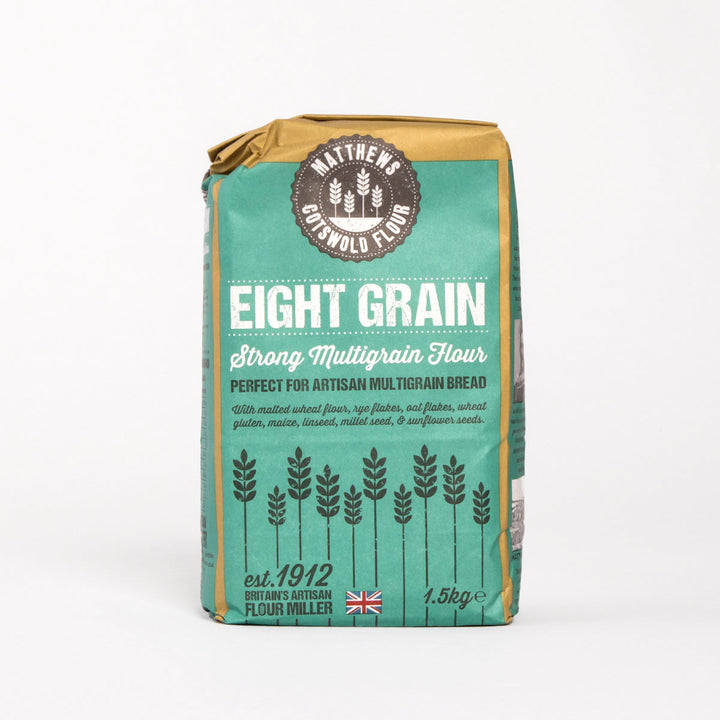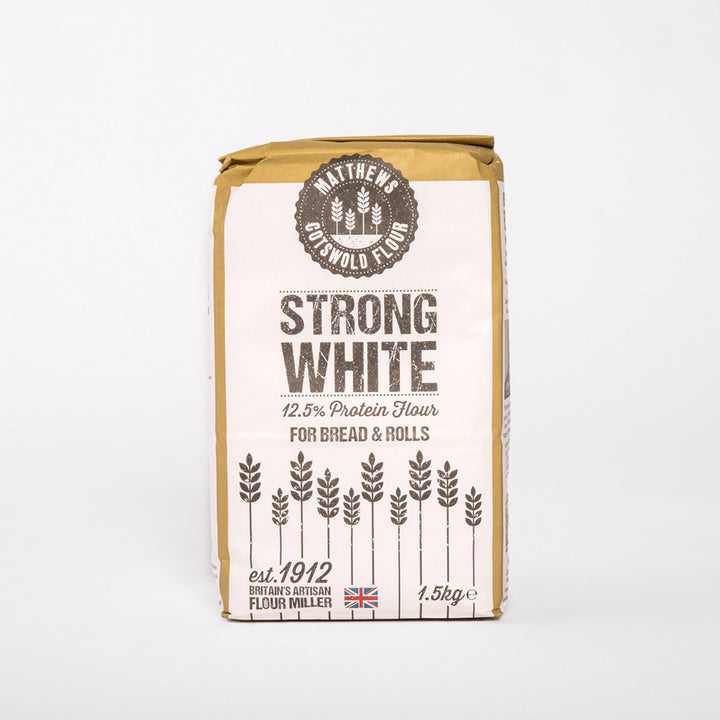Seven Seed and Grain Light Rye Loaf



Ingredients
380g Matthews Cotswold Organic Seven Seed and Grain Flour
40g Whole Grain Rye Flour
100g active sourdough starter
335g lukewarm water
10g salt




Makes: 1 loaf
Prep time: 45 mins , plus proving time
Bake time: 40-45 mins
Flours used: Matthews Cotswold Organic Seven Seed and Grain
Method:
- Combine 310g of the water with the active starter and mix until cloudy, then add in the flours and mix by hand until all the flour is mixed in and a dough is formed. Leave the dough to rest for 30 mins and then squeeze in the remaining 25g of water and the 10g of salt using your hand.
- Once the dough has been formed it needs to be developed, this can be done by hand or using a free standing mixer with a dough hook. I tend to use a mixer as the dough can be a little sticky at this point. Place the dough in the free standing mixer and mix for 3 to 4 mins on medium speed.
- At this point the dough can be moved to a large greased mixing bowl (I use olive oil) and rested for 20 mins. After 20 mins you can begin folding the dough. Wet one of your hands, this will be the one that does the folding, and with the other, grab the side of the mixing bowl. Using your wet hand pull up the side of the dough as high as you can without it breaking and place it into the centre of the dough, then do a quarter turn of the bowl and repeat. Do this until you can feel the dough starting to resist your pull, the dough should then rest for 25 mins covered by a tea towel. You want to fold your dough a total of 4 times. Once this is done, cover the bowl with a tea towel and leave it to rest for an hour.
- Place your dough onto a lightly floured surface and use a dough scraper or your hand to create tension on the surface of the dough. This is done by tucking the bottom of the dough into itself while moving it in a circular motion. Once the dough feels taut, it can be left to rest on the surface for 20 mins.
- After the dough has rested on the surface it will be ready to shape. Lift the dough up and flip it over so the bottom is facing upwards then fold the dough up like a letter, by gently folding one side into the middle and then folding the other on top of it. Then turn the dough 90 degrees and repeat the folding, this will leave you with the perfect shape and good tension on the top of your dough. I like to transfer my loaf into a floured banneton at this point but you can also put yours into a bowl lined with a heavily floured tea towel. This loaf works well as a batard loaf or a round loaf so it's up to you which shape banneton you choose. I like to do a long cold fermentation as I think it works best for this loaf, so once the dough is shaped and in a banneton cover it and leave it in the fridge for 14 to 18 hours.
- Once the dough has spent some time in the fridge it will have risen and be ready to bake. Preheat your oven to 240°C for 45 minutes with your Dutch oven also inside preheating. Once the oven is almost preheated, take your dough out of the fridge and tip it out onto a lightly floured chopping board, this will help to flour the bottom before it's baked. This is the point where you score the loaf. For a batard loaf I often go for a simple score down the middle or along one side and for a round loaf I usually score a circle into the top at a 45 degree angle.
- Once the Dutch oven is hot you can place the bread in and quickly put the lid back on and get it in the oven. When placing the bread into the pot be careful as it will be very hot, to help you can use a piece of baking paper under the dough while lifting it in. Reduce the temperature to 220°C and bake for 15 minutes and then reduce the temperature to 200°C and bake for a further 15 minutes, after this you can take the lid off of the Dutch oven and then bake for another 10 to 15 minutes or until the loaf is brown.
- Now your bread is done, you should have a wonderful smelling loaf in front of you but don’t cut it open just yet, the bread needs to cool for at least an hour before you can slice it up and try it.
Hope you enjoy
Thank you so much to Issy Davies @issys_baking_sewing_ for providing this recipe. If you’d like to see more, please visit their Instagram page.
← Older Post Newer Post →













